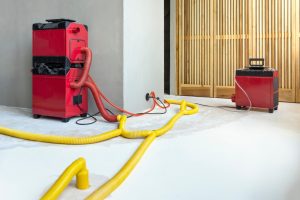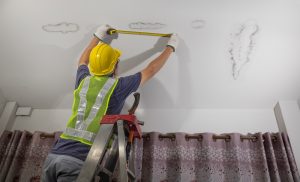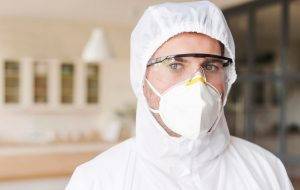Everyone has a secret family recipe. Surely. Jessica (the head of Yeti operations) grew up with a Dad who was a successful for-real chef. He knows
more about the perfect meal than most of us have ever learned about anything.
In the mold remediation world, because we’re such fun-loving types, we’ve got a recipe for mold remediation called the “HEPA Sandwich”. You’d love it. As mold experts, we establish containment wherever necessary; before a fully suited remediation professional HEPA vacs the affected surface, damp wipes said surface, and then HEPA vacs again.
Somewhere along the way the secret recipe has been getting a sly adjustment.
In fact, the sandwich has fallen apart altogether – more like an open face, now. This new recipe is now “HEPA, HEPA, Damp Wipe”.
A small change, and possibly insignificant. But the goal is the same – we’re trying to remove (not kill) the mold. The HEPA vac is a negative pressure chamber and it removes loose spores from hard surfaces.
The damp wipe step removes what else you can get off simply from that hard surface before repeating the steps.
In real life, there’s an abrasion step between the two HEPA steps. As long as the moldy hard surface (mold on lumber, for example) is dry, the IICRC S520 recommends that the surface is sanded or otherwise abraded, before the second HEPA vac, and the final damp wipe to collect residual mold spores.

If you’re ever lucky enough to watch mold under a microscope when a person walks past, you’ll see what appears to be all the mold fly away. Actually, that air movement that was imperceptible to you, was a storm in the mold cup, because these spores are light enough to be carried in the air. Easily moved, and fragile. The roots of mold do not go deep on hard surfaces, so they fly away easily. The HEPA vac step sucks them in before you get too close to be moving them around too much.

While we recommend this as the first step in every mold remediation, the practical knowledge is that this recipe is most effective on hard surfaces. Sadly, mold will embed roots in porous surfaces like drywall and cloth.
When drywall is affected by mold, we remove it 100% of the time. The stud wall behind that drywall may also be affected but would not need to be removed. That hard surface like lumber can have the HEPA, HEPA, Damp Wipe treatment, and may even be sanded or otherwise abraded to physically remove the spores from this substrate.
Those spores then get the HEPA, HEPA, Damp Wipe treatment again, and get sucked or blown into a HEPA filter forever.
All this to get you back to a mold-neutral indoor environment.
Adapted from the book: Yeti’s Eat Mold for Breakfast, first published 2022






